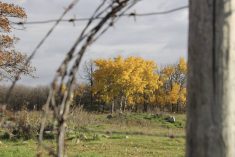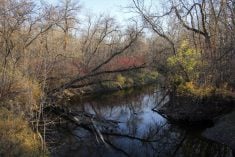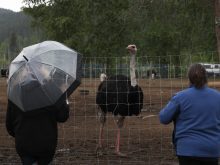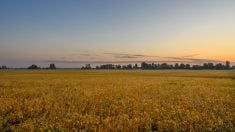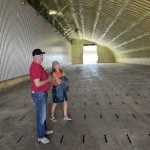Reuters — Calgary received a special weather alert on Tuesday, warning residents of poor air quality and reduced visibility as tinder-dry weather and shifting winds elevated the risk of spreading wildfires in Alberta’s north and west.
As of Tuesday evening 89 wildfires are active in Alberta, with 25 out of control, according to the provincial government, forcing about 20,000 people out of their homes.
A cold front bringing gusty northwest wind, but little rain, was likely on Tuesday, according to Environment Canada’s weather department.
Read Also

U.S. livestock: Feeder cattle hit contract highs on tight supply
Chicago | Reuters – All Chicago Mercantile Exchange feeder cattle futures and most live cattle futures hit contract highs on…
The change in wind direction can pose a problem for firefighters as the path of the fires changes suddenly, said Christie Tucker, spokesperson for the Alberta Wildfire agency.
Evacuation orders and alerts have also been sounded in neighbouring British Columbia, where as of Tuesday evening 61 wildfires are active, and Saskatchewan, where 28 wildfires are active with five ranked as “not contained.”
“The arrival of sustained winds from the north has resulted in aggressive fire behaviour on all wildfires within the north Peace Region,” the B.C. Wildfire Service said late Monday.
Saskatchewan on Tuesday reported it has had more than double the amount of wildfires usually seen at this time of year. Evacuation orders were recently issued at communities including Buffalo Narrows and Dillon, about 250 km north of Meadow Lake.
With fire risk rated high to extreme across much of the province, Saskatchewan on Tuesday also imposed a fire ban for Crown lands and provincial parks north of the Yellowhead Highway (Highway 16) and for the Northern Saskatchewan Administration District.
The Canadian military and firefighters from across Canada and the U.S. are helping fight the blazes in Alberta.
“We will build better,” Judy Levesque, who lost her house at Drayton Valley, said while fighting back tears. “We planned to renovate so now we get to do it quicker.”
“That’s the attitude we have to have because it’s too sad the other way.”
Drayton Valley, a town of almost 7,000 people about 100 km southwest of Edmonton, was under evacuation order up until Tuesday afternoon. Twenty-three full or partial evacuation orders remain in effect for various towns, municipalities, First Nation communities and Metis settlements in northern and western Alberta.
At one point Alberta’s fires forced oil and gas producers to shut in at least 319,000 barrels of oil equivalent per day, or 3.7 per cent of national production.
On Tuesday morning, Calgary-based Crescent Point Energy said it was shutting in its Kaybob Duvernay production, impacting 45,000 boepd, as a precautionary measure due to changing wildfire conditions. Benchmark Canadian heavy crude prices have risen to their highest levels in months on concerns about the wildfires.
Farther west in B.C., the hot weather is causing rapid snow melt that has increased river flow and prompted authorities to issue a flood warning for part of the Skeena region.
— Reporting for Reuters by Ismail Shakil in Ottawa, Anna Mehler Paperny in Toronto and Rod Nickel in Winnipeg. Includes files from Glacier FarmMedia Network staff.



